Hummingbirds
The hummingbird, with its impressive ability to hover and even fly backwards is found only in the Western Hemisphere. While hummingbirds are most noted for consuming the nectar of flowers, they also obtain nutrients from the insects they catch on the wing. Of the twenty species found north of Mexico, four have been spotted in the vicinity of Kootenay Lake: Black-chinned Hummingbird, Anna’s Hummingbird, Calliope Hummingbird, and Rufous Hummingbird, but only the last two are common.
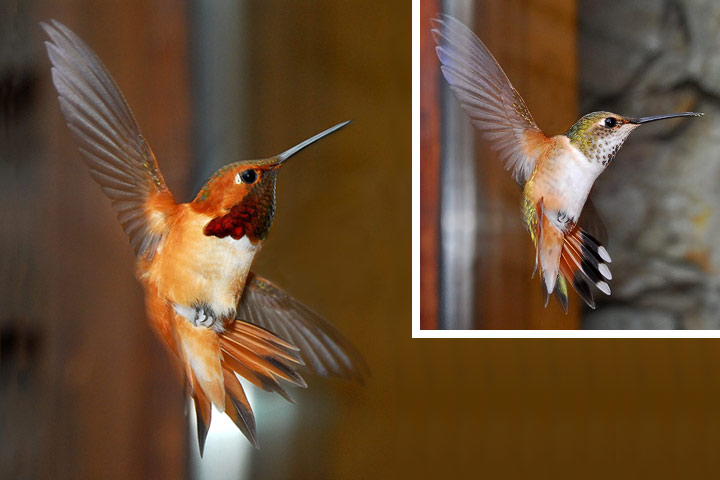 Rufous Hummingbird, male left, female right. Each bird is pictured as it is flying backwards.
Rufous Hummingbird, male left, female right. Each bird is pictured as it is flying backwards.
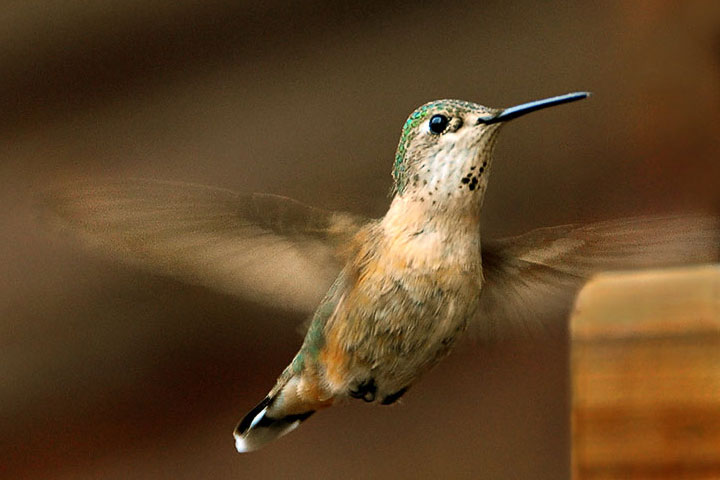 The female Rufous Hummingbird lacks the iridescent gorget of the male.
The female Rufous Hummingbird lacks the iridescent gorget of the male.
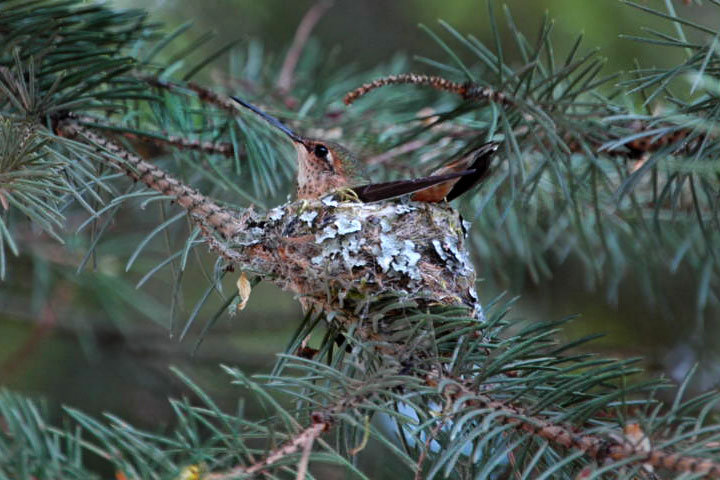 A female Rufous Hummingbird sits on the nest, which she alone tends.
A female Rufous Hummingbird sits on the nest, which she alone tends.  Alison Graeme
Alison Graeme
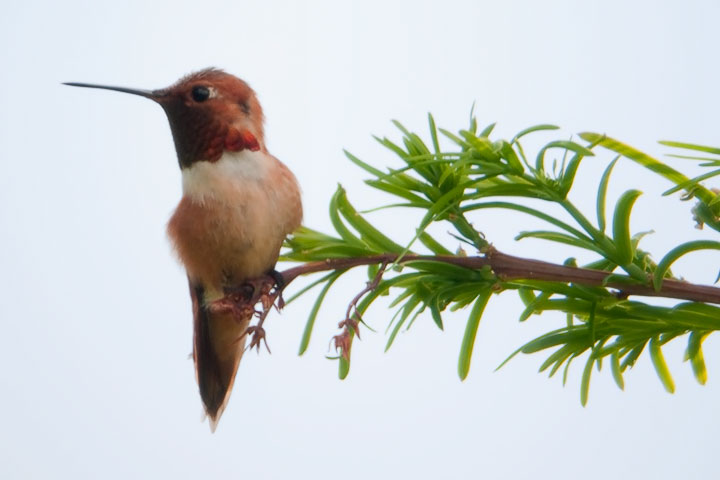 Irridescent gorget While much colour in nature (such as these green leaves) results from the selective absorption of light this is not true of the colours of the hummingbird gorget (its throat feathers). Gorget colour arises from the interference between light waves reflect from the front and inside back of the feather (the colours of soap bubble arise in a similar manner). That this process is highly directional can be seen here when the rufous turns its head.
Irridescent gorget While much colour in nature (such as these green leaves) results from the selective absorption of light this is not true of the colours of the hummingbird gorget (its throat feathers). Gorget colour arises from the interference between light waves reflect from the front and inside back of the feather (the colours of soap bubble arise in a similar manner). That this process is highly directional can be seen here when the rufous turns its head.
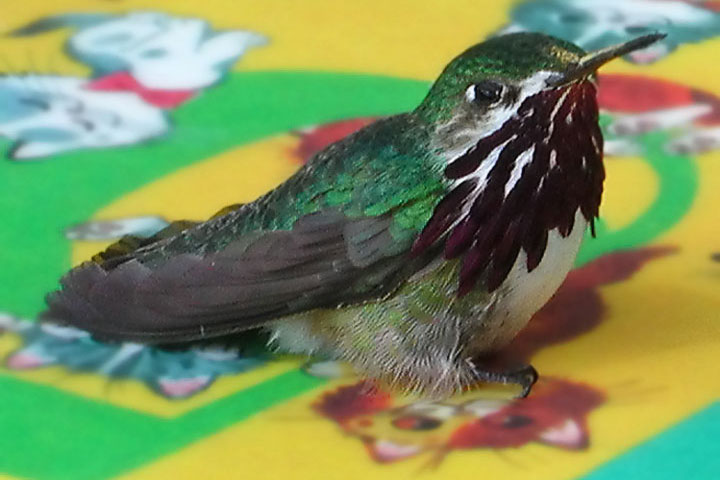 A male Calliope Hummingbird rests on a colourful place mat before taking off again. It is the tiniest hummingbird in North America.
A male Calliope Hummingbird rests on a colourful place mat before taking off again. It is the tiniest hummingbird in North America.
Information from Wikipedia: Rufous Hummingbird, Calliope Hummingbird.
![]()